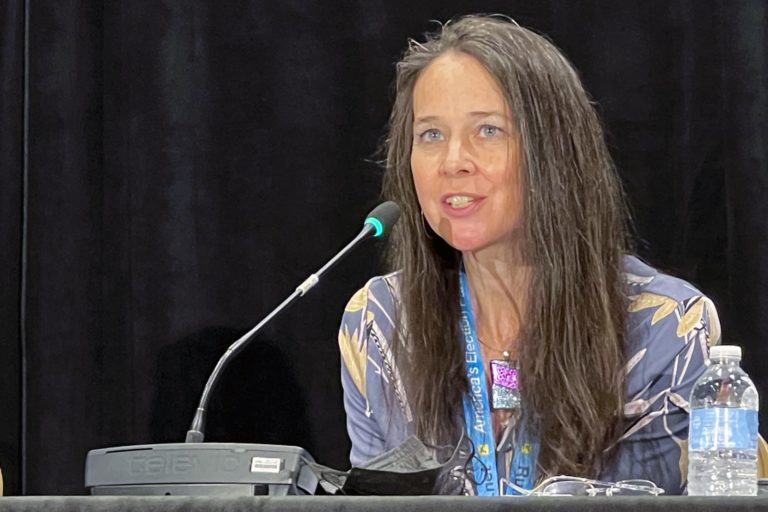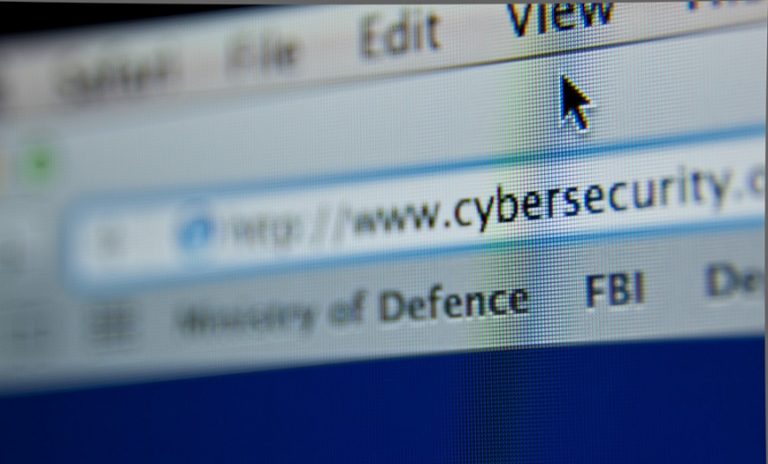Natanz attack: Iran vows ‘revenge’ as finger of blame pointed at Israel
Iran’s foreign minister has blamed Israel for what Tehran called a ‘terrorist attack’ on one of is nuclear facilities, and has vowed to ‘take revenge’.
Mohammad Javad Zarif accused Israel of targeting the Natanz nuclear enrichment facility as revenge for Iran’s moves to have US sanctions lifted.
‘The Zionists want to take revenge because of our progress in the way to lift sanctions … they have publicly said that they will not allow this. But we will take our revenge from the Zionists,’ he said.
Natanz was hit by a cyber attack just a day after Tehran unveiled new uranium enrichment centrifuges there.
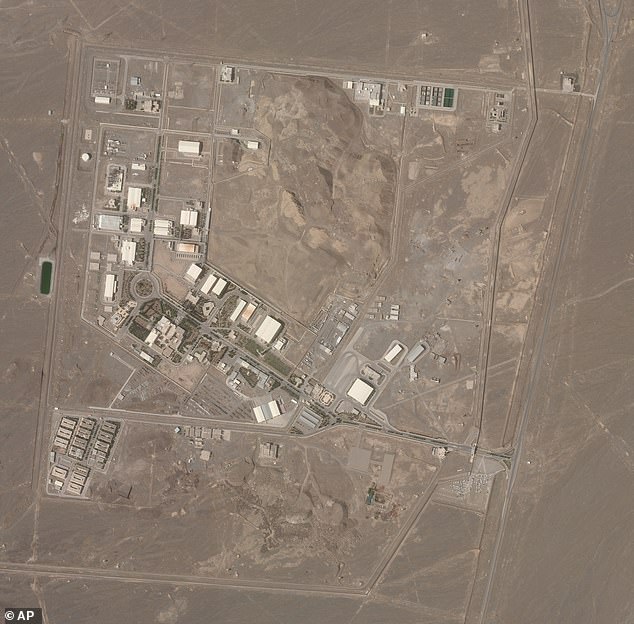
Iran’s nuclear enrichment facility at Natanz was hit by a suspected cyber attack the day after Tehran unveiled advanced centrifuges there
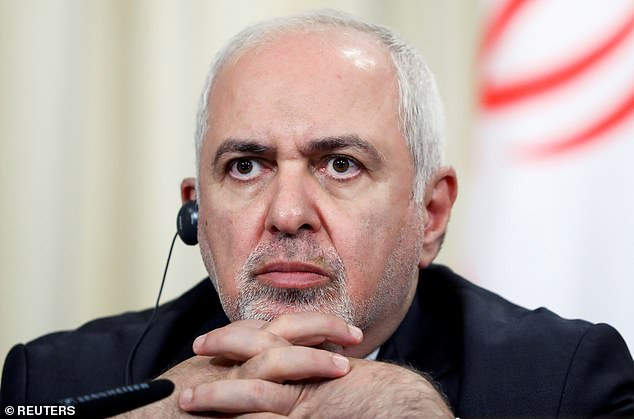
Foreign minister Mohammed Javad Zarif has blamed Israel for carrying out the attack, while vowing to take revenge
Centrifuges are used as part of the process to create enriched uranium, which can be used to make reactor fuel but can also be used to create nuclear weapons.
Iran’s atomic energy organisation said Sunday the Natanz facility was hit by a terrorist act, hours after it said an ‘accident’ had caused a power failure there.
Ali Akbar Salehi, the head of the Iran Atomic Energy Organisation (IAEO), condemned a ‘futile’ act, while urging the international community to ‘confront this anti-nuclear terrorism’, in a statement carried by state television.
The attack was carried out by ‘opponents of the country’s industrial and political progress, who aim to prevent development of a thriving nuclear industry,’ he said, without specifying what country or entity might be behind the alleged sabotage.
IAEO spokesman Behrouz Kamalvandi had earlier reported an accident at the enrichment facility caused by a ‘power failure’.
No one was injured and there was no radioactive release, the official Fars news agency reported, citing the spokesman.
Kamalvandi said there had been ‘an accident in part of the electrical circuit of the enrichment facility’ at the Natanz complex near Tehran.
‘The causes of the accident are under investigation and more details will be released later,’ he added, before the later statement put out by the agency’s chief.
He did not say whether power was cut only in the enrichment facility or across other installations at the site.
Malek Chariati, spokesman for the Iranian parliament’s energy commission, took to Twitter to allege sabotage.
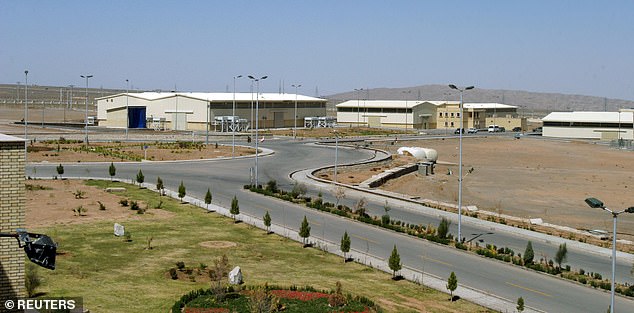
Israeli media has claimed that Israel’s Mossad spy agency were responsible for the reported cyber attack on the Natanz uranium enrichment facility, pictured
‘This incident, coming (the day after) National Nuclear Technology Day, as Iran endeavours to press the West into lifting sanctions, is strongly suspected to be sabotage or infiltration,’ Chariati said.
Iran’s President Hassan Rouhani had on Saturday inaugurated a cascade of centrifuges for enriching uranium and two test cascades at Natanz, in a ceremony broadcast by state television.
An Israeli public broadcast journalist, Amichai Stein, said on Twitter ‘the assessment is that the fault’ at Natanz is the ‘result of an Israeli cyber operation’, without elaborating or providing evidence to corroborate his claim.
Israeli Prime Minister Benjamin Netanyahu said later Sunday that ‘the struggle against Iran and its proxies and the Iranian armament efforts is a huge mission’.
‘The situation that exists today will not necessarily be the situation that will exist tomorrow,’ he added, without elaborating.
Netanyahu made the remarks during an event involving intelligence service Mossad and the army for Israel’s independence anniversary.
Iran’s president had on Saturday also inaugurated a replacement factory at Natanz, after an explosion at a facility making advanced centrifuges there last July.
Iranian authorities likewise blamed the July incident on ‘sabotage’ by ‘terrorists’, but have not released the results of their investigation into it.
The equipment inaugurated Saturday enables quicker enrichment of uranium and in higher quantities, to levels that violate Iran’s commitments under the 2015 nuclear deal it agreed with the five permanent United Nations Security Council powers, plus Germany.
The administration of then-US president Donald Trump unilaterally withdrew from this multilateral nuclear accord in 2018 and re-imposed biting sanctions on Iran.
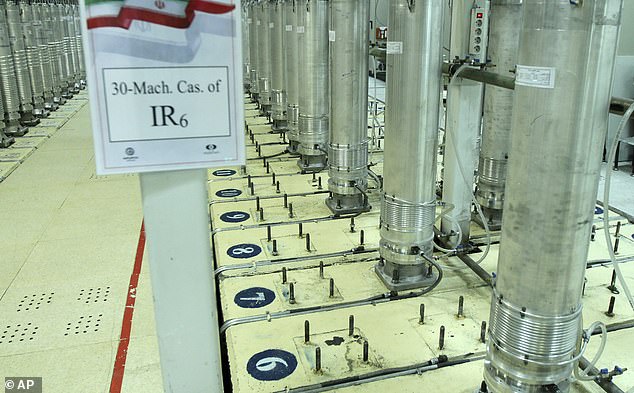
Centrifuges are used as part of the process to create enriched uranium, which can be used to make reactor fuel, but can also be used to create nuclear weapons
Iran later responded by progressively rolling back its own commitments under the agreement.
Trump’s successor Joe Biden has said he is prepared to return to the deal, arguing it had – until Washington’s withdrawal – been successful in dramatically scaling back Iran’s nuclear activities.
Iran’s latest move to step up uranium enrichment follows an opening round of talks in Vienna Tuesday with representatives of the remaining parties to the nuclear deal on bringing the US back into it.
The talks are focused not only on lifting the crippling economic sanctions Trump reimposed, but also on bringing Iran back into compliance.
Iran’s nemesis Israel has always been implacably opposed to the 2015 accord.
In November last year, Iran’s top nuclear scientist Mohsen Fakhrizadeh was killed by machine gun fire while travelling on a highway outside Tehran.
Iran’s elite Revolutionary Guards said a satellite-controlled gun with ‘artificial intelligence’ was used in the attack, which Tehran blamed on Israel.
Uranium enrichment can produce the fuel for a nuclear reactor, or in highly extended form, the fissile core of an atomic warhead. It is one of the most sensitive nuclear activities carried out by Iran.
Rouhani had again underlined at Saturday’s ceremony that Tehran’s nuclear programme is solely for ‘peaceful’ purposes.
Iran and the atom: ‘Attack’ on Natanz is just the latest on nuclear programme that Tehran insists is peaceful by neighbours fear will be used to make bombs
Iran’s nuclear program has been targeted by diplomatic efforts and sabotage attacks over the last decade, with the latest incident striking its underground Natanz facility.
The attack Sunday at Natanz comes as world powers try to negotiate a return by Iran and the U.S. to Tehran’s atomic accord. The sabotage threatens to upend those negotiations and further heighten regional tensions across the Mideast.
FROM ‘ATOMS FOR PEACE’ TO PROLIFERATION
Iran’s nuclear program actually began with the help of the United States. Under its ‘Atoms for Peace’ program, America supplied a test reactor that came online in Tehran in 1967 under the rule of Shah Mohammad Reza Pahlavi. That help ended once Iran’s 1979 Islamic Revolution overthrew the shah.
In the 1990s, Iran expanded its program, including secretly buying equipment from Pakistan’s top nuclear scientist Abdul Qadeer Khan. Khan helped create Pakistan’s nuclear weapons program and his proliferation aided North Korea in obtaining the atomic bombs it has today. Khan’s designs allowed Iran to build the IR-1 centrifuges that largely power its uranium enrichment.
Tehran insists its atomic program is peaceful. However, Iran ‘carried out activities relevant to the development of a nuclear explosive device’ in a ‘structured program’ through the end of 2003, the International Atomic Energy Agency has said. That’s an assessment shared by U.S. intelligence agencies and the State Department. Israeli Prime Minister Benjamin Netanyahu long has alleged Iran continues to want nuclear weapons to this day.
IRAN’S NUCLEAR SITES
Natanz, in Iran’s central Isfahan province, hosts the country’s main uranium enrichment facility. Iran has one operating nuclear power plant in Bushehr, which it opened with Russia’s help in 2011. Iran previously reconfigured its Arak heavy-water reactor so it couldn’t produce plutonium. Its Fordo enrichment site is also dug deep into a mountainside. Tehran also still operates the Tehran research reactor.
DIPLOMACY TO DISARRAY
Iran struck the nuclear deal in 2015 with the United States, France, Germany, the United Kingdom, Russia and China. The deal, formally known as the Joint Comprehensive Plan of Action, saw Iran dramatically limit its enrichment of uranium under the watch of IAEA inspectors in exchange for the lifting of economic sanctions. The small stockpile of less-enriched uranium blocked Iran from having enough material to build a nuclear bomb if it chose.
Then-President Donald Trump unilaterally withdrew America from the accord in 2018, in part over the deal not addressing Iran’s ballistic missile program and its support of allied militant groups in the Mideast. Architects of the deal, containing provisions that expire over time, had said they hoped American officials could build on it for future agreements.
Since the U.S. withdrawal, Iran has in response abandoned all the deal’s limits of its uranium enrichment. It spins advanced centrifuges, grows its stockpile and enriches up to 20% purity – a technical step away from weapons-grade levels of 90%.
President Joe Biden, who took office in January, has said he’s willing to re-enter the nuclear deal. Countries began negotiations in Vienna last week seeking to find a way forward. Israel, which under Netanyahu has vowed not to see the deal revived, is widely suspected of recently stepping up a shadow campaign targeting Iran.
‘NUCLEAR TERRORISM’
With the sabotage of Natanz on Sunday, the head of Iran’s civilian nuclear program described it as ‘nuclear terrorism.’ But it marked merely the latest attack targeting the Iranian program.
Natanz found itself first targeted by a major cyberattack in the late 2000s. Called Stuxnet, the virus attacked control units for centrifuges at Natanz, causing the sensitive devices to spin out of control and destroy themselves. Experts widely attribute the attack to America and Israel, as does Iran.
Another sabotage attack targeted Natanz in July. An explosion ripped apart an advanced centrifuge assembly plant at the site. Afterward, Iran said it would rebuild the site deep inside a nearby mountain. Satellite photos show that work continues. Suspicion widely fell on Israel for the blast as well.
Then there have been a series of assassinations targeting Iranian nuclear scientists over the last decade. The killings involved bombings and shootings. The most-recent killing saw the scientist who founded Iran’s military nuclear program decades ago shot in November by what authorities have described as a remote-controlled machine gun that later exploded. Iran blames Israel for those slayings as well.
SINGING AMONG THE CENTRIFUGES
The extent of the damage to Natanz remains unclear at the moment. Iran has yet to broadcast any images of the facility on state television. It’s unclear if any of the damage will be able to be seen from the air as its centrifuge halls are all underground. NASA fire satellites detected no visible blasts at the facility either Saturday or Sunday.
The longterm effects on Iran’s atomic program as a whole also remain unclear. If the attack halts centrifuges at Natanz, they still spin at Fordo. Ali Akbar Salehi, the head of the Atomic Energy Organization of Iran, vowed Sunday to keep advancing the country’s nuclear technology.
The sabotage comes at a sensitive time for outgoing President Hassan Rouhani, whose administration is trying to claw back its signature diplomatic achievement through the Vienna talks. Term-limited from seeking office again, the relative-moderate Rouhani will bow out to whoever wins Iran’s upcoming June presidential election.
If Iran can’t regain the benefits of the deal, it could boost hard-liners within the Islamic Republic. Already, some media outlets demanded Monday for Rouhani to pull out of the Vienna negotiations.
The Natanz sabotage also further links Iran’s nuclear program to the propaganda aired by state television urging the country to resist outside pressure. Before the sabotage, state TV aired a segment showing men in white lab coats singing among Natanz’s silver centrifuges, some holding pictures of the scientists slain in the earlier assassinations.
‘We are proud and victorious in science,’ the men sang. ‘We believe in ourselves and don’t pin hopes to foreigners.’
The singers likely weren’t nuclear scientists, however. Iran since the killing has carefully blurred their images, worried about them being targeted again.

